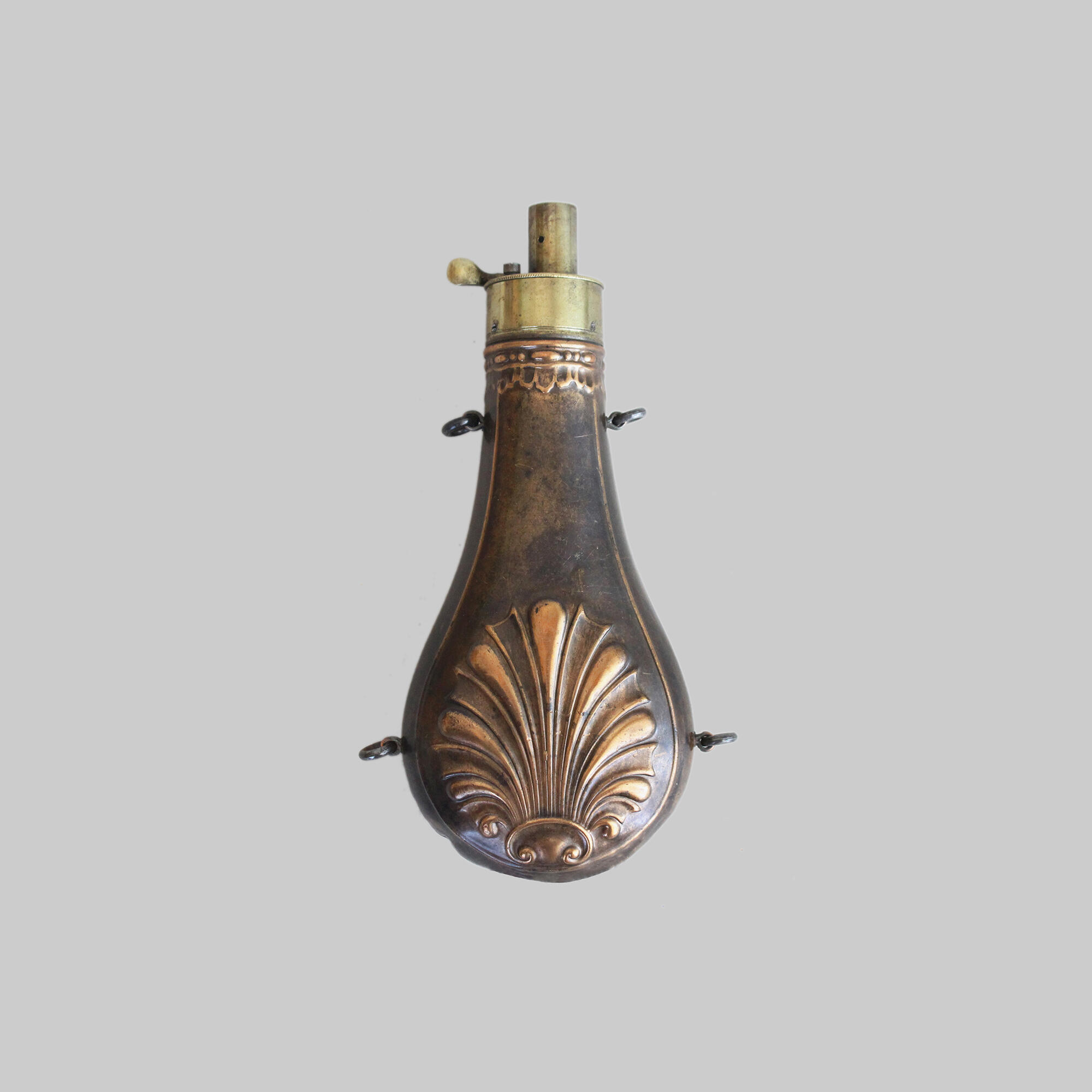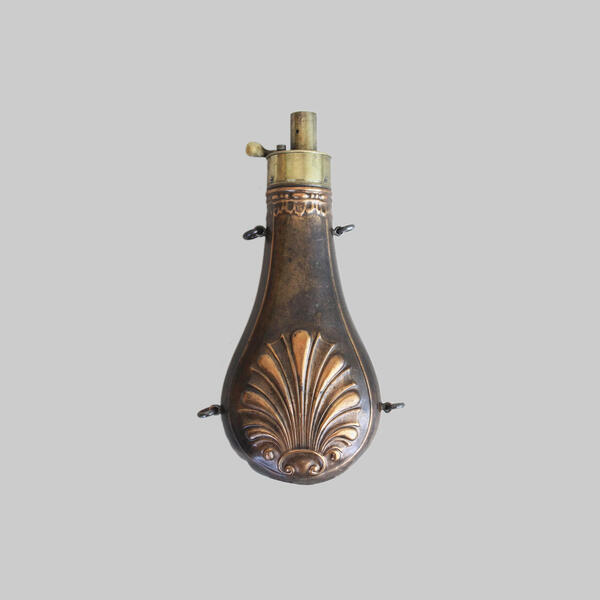Sidearms, or handguns appeared in Russia in the 15th century. An indispensable attribute of the hunter’s equipment was a powder flask, which is a container to hold gunpowder that the hunter always carried with him. When hunting, they were used to pour powder into the powder measure, and then into the barrel itself. Gunpowder was always expensive, so it was stored carefully, which made choosing a container very important. Hunting powder flasks were distinguished not only by manufacture subtlety, but also by the beauty of the finish. Powder flasks were often decorated with carvings on a wooden base, painted, or chased on metal. Along with a powder flask on his belt, every hunter always had a measure for gunpowder, which was most often made of bone, as well as leather or fabric bags for pellets and a whetstone. The need for powder flasks disappeared with the advent of unitary cartridges at the end of the 19th century. In fishing areas where cartridges were expensive, powder flasks were used until the 1920s.
The powder flask displayed in the exhibit is made in the form of a drinking flask, while the main body is made of red copper, and the neck is made of yellow copper. A lid was screwed onto it from above, into which a narrow neck was inserted. The powder flask was closed from the inside with a small movable lid. The case is decorated on both sides with embossing in the form of a relief floral ornament. In addition, on the sides of the powder flask there are two round rings for attaching a strap for carrying it over the shoulder.
Writer and artist Mikhail Znamensky, who spent his childhood in Yalutorovsk and was a frequent visitor of the Decembrist’s house, in his memoirs left information on the situation in the office of Matvey Muravyov-Apostol:
The powder flask displayed in the exhibit is made in the form of a drinking flask, while the main body is made of red copper, and the neck is made of yellow copper. A lid was screwed onto it from above, into which a narrow neck was inserted. The powder flask was closed from the inside with a small movable lid. The case is decorated on both sides with embossing in the form of a relief floral ornament. In addition, on the sides of the powder flask there are two round rings for attaching a strap for carrying it over the shoulder.
Writer and artist Mikhail Znamensky, who spent his childhood in Yalutorovsk and was a frequent visitor of the Decembrist’s house, in his memoirs left information on the situation in the office of Matvey Muravyov-Apostol:



